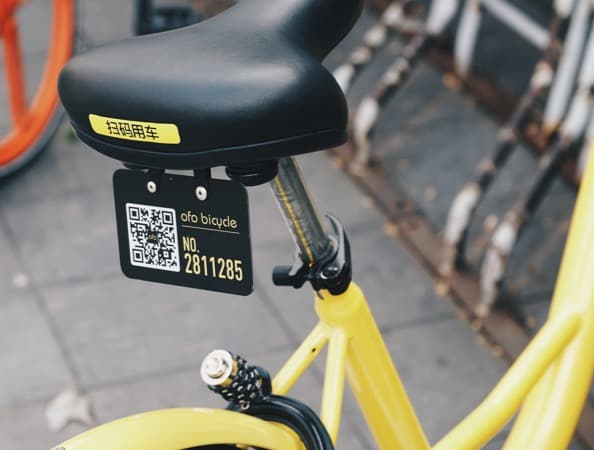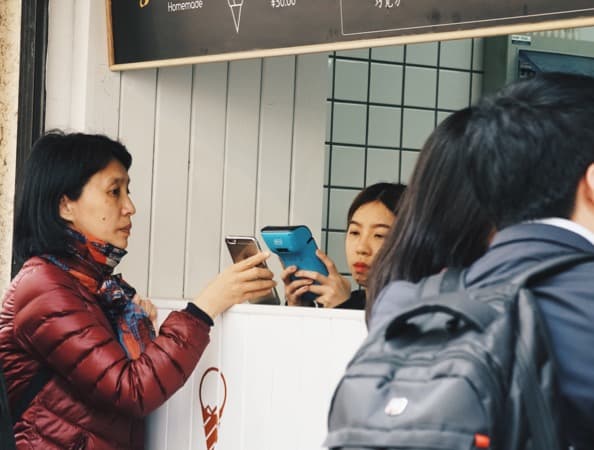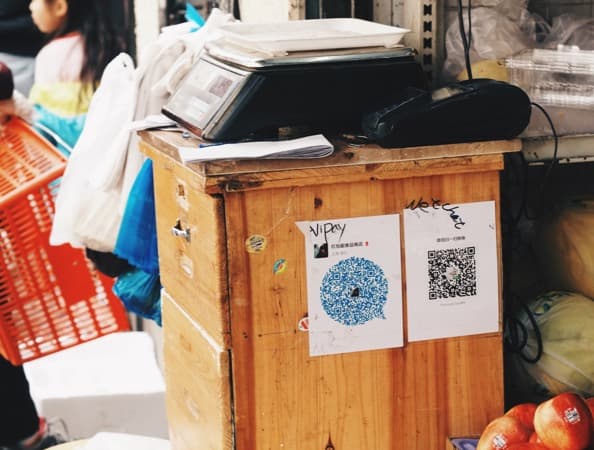WeChat: Inside a Super App
WeChat is China’s biggest social network with over 900 million users. When it added a wallet in 2014 it caused huge changes in Chinese commerce and society so we conducted an ethnographic study to find out more.
WeChat added a wallet in 2014, leading to huge changes in Chinese commerce and society. We wanted to understand why.
From outside China, it’s hard to understand how WeChat works and how it is used. We conducted an ethnographic study to find out more. What we learned is not only a fascinating look at the way modern China is changing, but it also gives us clues about how social platforms and e-commerce are likely to change in Western economies in the years ahead.
How it all began
The beginning
We sent a team to Shanghai to run a rapid ethnographic study with both consumer and business-owning WeChat users. We conducted both guerrilla research and in-depth interviews with a range of people from baby boomers to millennials to get a clear picture of WeChat e-commerce from all sides.
Statistics
5
days in Shanghai
7
in depth interviews
15
guerrilla interviews
Seamless Integration
Super App
In the West, we still see apps as islands of functionality. For instance, when arranging a night out with friends we might open and close a variety of apps before, during and after the event: WhatsApp to chat and make a plan; Google to find places to eat; Urbanspoon and Instagram to check them out; OpenTable to make a booking; Uber to get us all there; PayPal to split the bill and TripAdvisor to review the experience.
In China, that entire exercise can be completed within WeChat. All of the key features and functionality from the Chinese equivalent branded services are integrated into WeChat using APIs and microsites. You never have to leave the app and it’s stitched together with WeChat’s own wallet, making paying for that cab or sending money to a friend a seamless experience.
All this raises questions about the way we think about and use apps in the West. Why are our phones full of apps which we rarely use? Why can’t the services and functionality of these apps be rolled up into other social or payments apps? In China, this is exactly what’s happening. Some of our respondents described opening WeChat in the morning and never leaving it until they went to bed at night.
As well as integration into the customer’s world, WeChat has also integrated into the business world with another app, Wei Dian. This allows businesses to manage their WeChat presence and run businesses off the back of it. Wei Dian has a suite of tools to run businesses pointed at WeChat including CMS, stock and order management, and payments.
The combination of these apps allows for businesses, big and small, to easily integrate themselves into the WeChat world. Through WeChat, anyone can setup and run an entire business.
Nuances
WeChat allows you to do things from ordering a take-away to booking a doctor’s appointment without having to leave the app while a mobile services shop owner we spoke to had no physical inventory or premises; he made his living and ran his business completely within WeChat – from a fold-up seat near a cafe.

Super simple
WeChat intentionally constrains its UI to ensure a consistent experience for its users. WeChat has two core interaction models: messaging, where you chat to friends and brands; and content browsing, with APIs which take you to a web-browsing and micro-app mode. The layout palette is also quite narrow.
At its core is the chat interface. User-to-user it looks similar to western messaging apps, but when chatting to brands, a strict 3-button menu appears at the foot of the interface. Brands are free to name and assign functionality to these 3-buttons as they please.
There is also a Moments interface, similar to Facebook’s newsfeed, where brands can post content and establish a distinctive tone-of-voice.
QR codes are vital to the integration between the physical and digital world. We saw QR codes everywhere in Shanghai. They support a number of features in WeChat:
Your identity: everyone has a personal QR code that represents you and can be used to find you on WeChat.
Your wallet: your WeChat wallet is represented by another QR code that facilitates transactions with you.
Ad hoc codes: WeChat allows users to generate ad hoc codes to represent everything from boarding passes to concert tickets as well as actual cash.
Super Versatile
You can set up an entire business.
Why are QR codes so popular? They are simple to use, easy to generate and don’t rely on phone manufacturers creating any native ability or any device outside of the phone. Their versatility has been a huge driver for WeChat's success.
WeChat’s QR reader technology is very advanced. It’s capable of reading at distance and takes less than a second to focus and read. Scanning codes is a natural part of everyday life in China. It’s a powerful way of connecting the digital and physical worlds, turning attention into intention and action.
Efficient
Super easy
A quick scan and the payment is done. Many stores are reluctant to take cash as it slows down service.
A market stall tapes two QR code printouts to their counter and they are setup for e-commerce.

Super human
The speed, simplicity and mass adoption of mobile payments has turned China from a cash-only society into an increasingly cash-free society in less than a decade. But WeChat’s success is more than just this. It empowers people to live, socialise and use money in new ways.
It’s acutely attuned to Chinese culture; WeChat has digitised Chinese traditions like taking a year’s wages back to your family’s home village or sharing hong bao red packets at New Year. The people we spoke to seemed entirely comfortable spending and moving money using what is still a relatively new service. For a token sum, your WeChat balance is insured.
I forgot my wallet, but I didn’t even need it because I could pay with my phone. Going back to Singapore felt really backwards
- Male Gen X, Shanghai, expat for 10 years
The perfect time
WeChat’s growth has been stunning: just 1 year to reach 100M MAUs, 4 years to 500M, 6 years to 900M.
When the Chinese government banned huge US internet giants like Facebook, Google and Instagram in 2010, it was happy to allow local players to fill the market gap. So, when WeChat first launched in 2011 it had space to grow and develop as a social network.
Its biggest growth happened after the introduction of WeChat Pay in 2014. Integrating a wallet and payments into an already popular social messaging app, it took only 3 years to capture 40% of China’s mobile payments market.
Loose regulation also helped. If you had WeChat, but no WeChat wallet it would be automatically created for you as soon as a friend sent you some money – no registration, no verification, no credit checks.
That lack of regulation made it really easy for WeChat to quickly convert its user base and make them all WeChat Pay users.
If you paint that against a growing landscape of mobile internet usage, you can see how there was a massive opportunity at that time. Subsequent tightening of financial regulations now makes it hard for new players to enter the market.
The power of two
The story of WeChat isn’t the whole story. Alibaba’s Alipay (launched way back in 2004) has also been a dominant player in the payments landscape throughout the last decade.
But if you look at it from a societal impact point of view, Alipay on its own hadn’t made much headway. China had always traditionally been a cash-first society. And all the way until WeChat Pay launched in 2014, cash was the preferred way of payment.
Then WeChat Pay arrived in 2014, and by 2017 Chinese newspapers were reporting that 70% of China’s internet users no longer carry cash. It’s only taken three years for China to become a largely cashless economy.
Our reflection is that the “Power of Two” accelerated the uptake of digital payment. It takes two big players to create the kind of competitive pressure needed for real societal impact. In China, it was WeChat and Alipay.
So, what will happen in the West?

The West’s first super app?
In the last two years Facebook has been developing a number of features and services which echo what WeChat has been doing in China.Facebook has integrated a QR code system and reader, opened up APIs for brands to integrate with Messenger, launched Facebook Payments and looks set to further extend its interest into wallet and payments in the months ahead.Our view is that if another major player were to enter the ring, for example, if Paypal were to create a social platform with integrated payments like Alipay did in China, then the “Power of Two” effect could quickly change the social and ecommerce landscape in Western economies.The main characteristic of this will be that western super apps start eating up branded apps that litter the landscape. Why would Aviva, or East Midlands Trains, or hungryhouse rely on their own apps when they could integrate them into payments-enabled social platforms?
6 opportunities
Over the next few years we expect to see a shift towards brands integrating their content and services into social apps. And the story of WeChat in China suggests it could all happen very quickly. Early movers can carve out a significant advantage in this new landscape. Here are some things to think about:
Be ready for fragmentation
Can you break up parts of your apps and services and put them into other apps via their APIs?
Do you know how this works, and do you have technical teams in place that can experiment in this space?
Which fragments should you deploy?
Which of your features and functionality would be useful or valuable to deploy in a payments-enabled social platform?
Hint: It’s probably not all of them. It’s the high value features, and those that are socially connected.
Social as more than a marketing comms channel
Social platforms will become a frontline channel for all aspects of a brand’s customer experience.
It won’t just be used for marcoms and customer dialogue, but as a channel for service delivery and ecommerce.
Learn to love QR codes
Even with Apple (finally) allowing NFC interaction, QR codes still represent the easiest way to deploy links between the digital and physical worlds, their best days are probably still ahead of them.
Explore how QR codes can close the loop between awareness and action whilst decreasing time-to-wallet.
Start talking to your legal, compliance and security people
There will be a wealth of new interactions in different places, apps, and user contexts.
Start thinking about the security, privacy and regulatory implications of services which are going to become popular in the age of superapps.
Less control over branding; more control over brand
Conducting more of your brand’s business on someone else’s app will mean a shift away from traditional, rigid styles of brand management.
Make ready for a less formal, more conversational presence in the market.
Summary
Our fieldwork in China helped us understand the impact WeChat has had on society in such a short time: WeChat is everywhere.
What struck us most was how the Super App phenomenon could arrive in the West quickly and easily. With Facebook already primed for major change, it is not much of a stretch to imagine a rapid emergence of such services in the West.
Our trip to Shanghai showed us that it is high time we started paying close attention to what WeChat has achieved. While WeChat itself is unlikely to become a major force in the West, it is nevertheless going to change the face of the app landscape and mobile services all over the world.
This study and report was put together by Amy Shore, Darren Ng, Ziqq Rafit, Sam Yuen and Tom Wood and published in November 2017. If you’d like to know more about the research, please contact them at info@foolproof.co.uk.